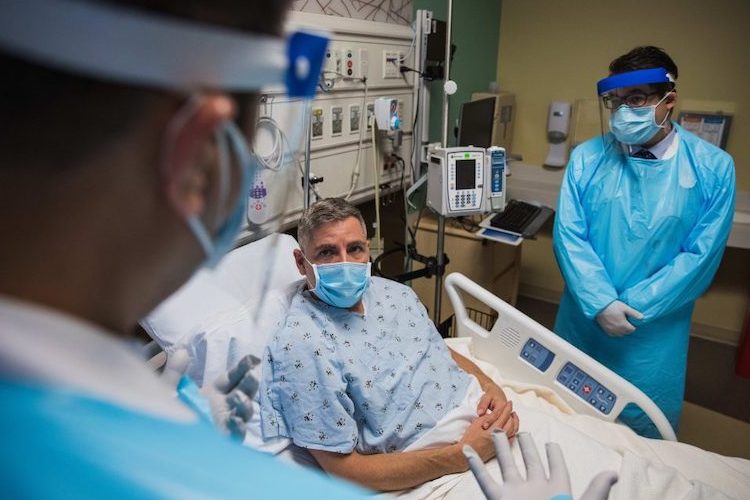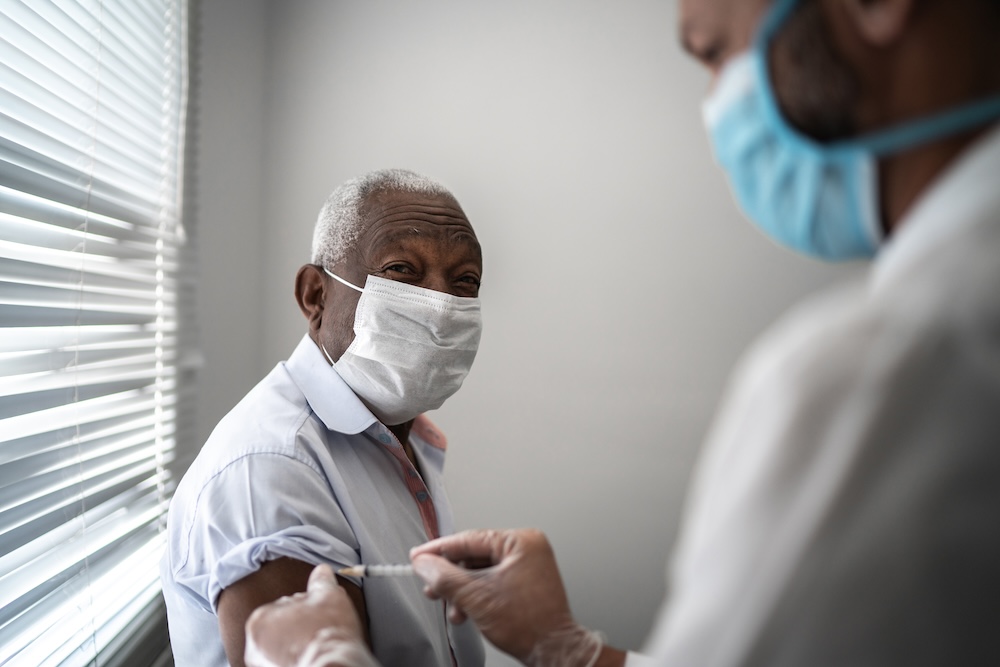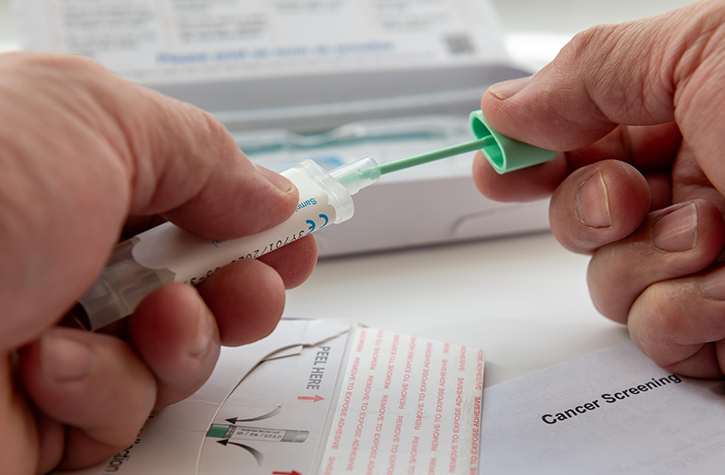January 6, 2022
Patients undergoing outpatient total hip and knee replacement surgery had improved recovery outcomes when receiving spinal anesthesia compared with general anesthesia, a Kaiser Permanente study found.
The research, published in the journal Regional Anesthesia & Pain Medicine, supports the use of neuraxial, or spinal, anesthesia for outpatient joint replacement, said lead author Edward Yap, MD, an anesthesiologist with The Permanente Medical Group (TPMG) and member of TPMG’s Anesthesia Research Collaborative, a specialty research network with the Delivery Science and Applied Research group housed at the Kaiser Permanente Division of Research.
“This is the first large study examining anesthesia technique in outpatient total joint arthroplasty and patient outcomes after surgery,” said Dr. Yap, who is also a volunteer assistant clinical professor at the University of California, San Francisco. “We found benefits to patients including improvements in recovery, pain, nausea and vomiting, and rate of same-day discharge. We also found no significant difference in the complication rates of spinal or general anesthesia.”
The study included 11,523 Kaiser Permanente Northern California (KPNC) adult patients who underwent replacement of a hip or knee joint on an outpatient basis – meaning they were scheduled not to stay overnight in the hospital – between 2017 and 2019. Of these, 87% received a spinal anesthesia and 13% general anesthesia.
The study was designed to compare spinal and general anesthesia. Spinal anesthesia is given through an injection in the lower spine, blocking sensation in the nerves of the lower body. These patients also have an intravenous sedative to make them largely unaware of the procedure.
General anesthesia is a combination of an inhaled anesthetic and intravenous drugs that provides sedation and pain control throughout the body. Patients also have assistance breathing, sometimes with a breathing tube. General anesthesia can be associated with increased nausea, vomiting, and longer in-hospital time.
KP Northern California patients undergoing an outpatient total hip or knee replacement choose a type of anesthesia with the advice of their physicians. Some patients who can’t tolerate a drop in blood pressure that is associated with spinal anesthesia or who don’t want a spinal may receive general anesthesia instead, Dr. Yap said.
The study found a low incidence of complications 30 days post-surgery among all the patients, and no significant difference in major complication rates between the types of anesthesia — 1.8% for spinal versus 2.3% for general anesthesia. There was also no significant difference in rates of readmissions to the hospital within 30 days of surgery — 2.3% for spinal vs. 3% for general.
Patients who received general anesthesia received twice as much opioids after surgery and reported higher average pain scores (median 2.5 vs. 1.5) and maximum pain scores (median 7 vs. 5). Patients receiving general anesthesia also were unable to go home the same day at a higher rate — 33% vs. 23.4% than those getting spinal anesthesia.
The lower pain scores for spinal anesthesia could be related to the idea of preventive analgesia, Dr. Yap said. “The idea is that neuraxial anesthesia prevents the nerves from being sensitized to the pain stimuli from surgery, reducing the pain after surgery.”
Supporting patient recovery at home
The study period was just after TPMG began transitioning total hip and knee replacement patients from overnight stays to outpatient procedures in 2017. Over the next few years, the region went from about 10% outpatient hip and knee replacements to over 80%.
Outpatients are supported by a multidisciplinary team who meet with them before surgery and by KP Northern California’s Care at Home and Enhanced Recovery After Surgery program teams who assist their recovery at home. The teams include a wide variety of caregivers including physicians, nurses, physical therapists, and care coordinators.
“Anesthesia choice has an impact on our patients’ recovery, and this research provides important insight on spinal vs. general anesthesia for these outpatient procedures,” said Smita Rouillard, MD, associate executive director of The Permanente Medical Group. “This study highlights the value of our integrated, multidisciplinary care delivery system.”
Anesthesia that results in shorter recovery times benefits outpatient surgery, the authors wrote. “An anesthetic plan that improves patient outcomes, reduces harm, and helps facilitate discharge home is important in deciding on the type of anesthesia for outpatient total joint arthroplasty, and can also affect patient satisfaction,” they said.
The study was funded by a Kaiser Permanente Northern California Community Benefit Grant.
Co-authors included Julia Wei, MPH, of the Division of Research; Christopher Webb, MD, and Kevin Ng, MD, of The Permanente Medical Group and the Anesthesia Research Collaborative; and Matthias Behrends, MD, of the University of California, San Francisco.
This article originally appeared in Division of Research Spotlight






